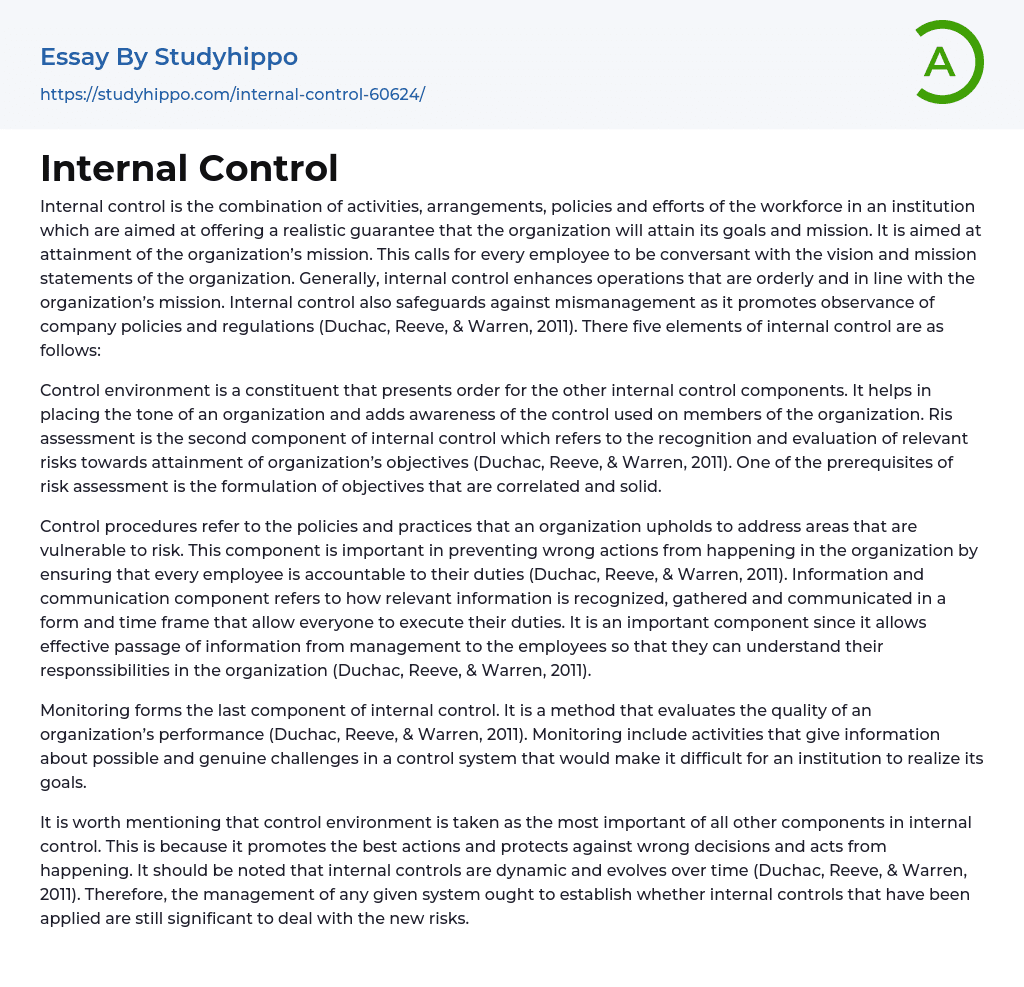Internal control encompasses a range of activities, arrangements, policies, and efforts carried out by the workforce within an institution. Its purpose is to ensure that the organization effectively achieves its goals and fulfills its mission. A key objective is to align all employees with the organization's vision and mission statements. The ultimate goal of internal control is to facilitate smooth operations in accordance with the organization's mission while preventing mismanagement by enforcing compliance with company policies and regulations (Duchac, Reeve, & Warren, 2011). There are five main components of internal control:
Control environment is an integral part that establishes structure for the other internal control components, setting the tone and fostering awareness of organizational control among members (Duchac, Reeve, & Warren, 2011). Risk assessment, as the second component of internal control, involves identifying and evaluating relevant risks in relation to achieving organiz
...ational objectives. One essential requirement for effective risk assessment is the formulation of interconnected and robust objectives.
Control procedures are the policies and practices implemented by organizations to address areas vulnerable to risk. These procedures are crucial in preventing wrong actions within the organization and ensure that employees are accountable for their duties (Duchac, Reeve, & Warren, 2011).
The information and communication component refers to the recognition, gathering, and communication of relevant information in a timely manner. This component is essential as it allows for effective flow of information from management to employees, enabling them to understand their responsibilities within the organization (Duchac, Reeve, & Warren, 2011).
Monitoring is the final component of internal control and involves evaluating the quality of an organization's performance. This includes activities that provide information about potential challenges in the control system tha
could hinder the organization from achieving its goals (Duchac, Reeve, & Warren, 2011).
It is important to note that the control environment is considered the most significant component in internal control. This is because it promotes good actions and safeguards against wrong decisions or actions. It should be recognized that internal controls are dynamic and evolve over time (Duchac, Reeve, & Warren, 2011).Hence, it is important for the management of a system to determine if the internal controls in place remain relevant in addressing emerging risks.
- Accountability essays
- Accounting Software essays
- Accounts Receivable essays
- Auditor's Report essays
- Balance Sheet essays
- Cash essays
- Cash Flow essays
- Costs essays
- Financial Audit essays
- Internal Control essays
- International Financial Reporting Standards essays
- Management Accounting essays
- Principal essays
- Tax essays
- Board Of Directors essays
- Brand Management essays
- Business Ethics essays
- Business Management essays
- Change Management essays
- Comparative Analysis essays
- Decision Making essays
- Dispute Resolution essays
- Knowledge Management essays
- Leadership essays
- Leadership and Management essays
- Manager essays
- Operations Management essays
- Performance Management essays
- Product Management essays
- Project Management essays
- Quality Management essays
- Risk essays
- Risk Management essays
- Scientific Management essays
- Stress Management essays
- supply chain management essays
- Time Management essays
- Total Quality Management essays




